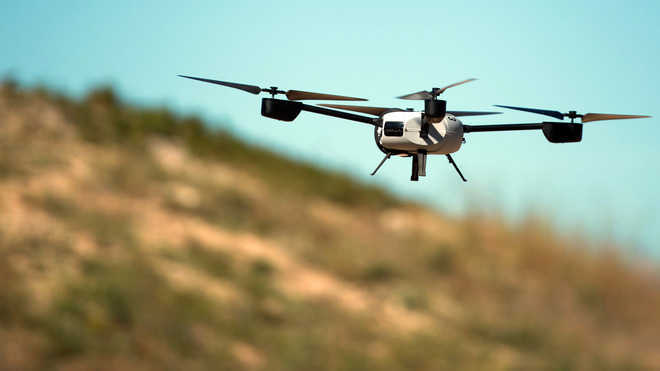
The US on Thursday night (Indian time) okayed the ‘US Policy on the Export of Unmanned Aerial Systems’.
Ajay Banerjee
Tribune News Service
New Delhi, April 20
A policy shift has been made by the United States enabling India to acquire armed unmanned aerial vehicles (UAVs), popularly known as drones.
The US on Thursday night (Indian time) okayed the ‘US Policy on the Export of Unmanned Aerial Systems’.
A statement of the US State department said: “The President (Donald Trump) has approved a new policy on the export of unmanned aerial systems (UAS). This policy updates and replaces the previous policy announced on February 17, 2015.”
For India the new policy allows use of these drones to fulfil ‘counter-terrorism objectives’, allowing attacks on terrorists who are so far dealt by ground-based Indian Army troops.
Requirements of India
New Delhi will be a major gainer as the Ministry of Defence (MoD) has a blueprint to procure more than 5,000 UAVs over the next 10 years. These will include high-altitude long-endurance (HALE) UAVs, vertical take-off and landing (VTOL) UAVs, medium-altitude, long-endurance (MALE) UAVs and mini UAVs. Some of these intend to be armed to buttress the strike capability.
The armed forces are looking for 100 of the Predator drones–both the armed version and for surveillance. It will increase India’s maritime surveillance capabilities in the Indian Ocean region. It can also keep a hawk’s eye on the long porous border with Pakistan and relay-live any attempts at incursions in the Northeast by the Chinese PLA. These drones can fly for 24 hours without refuelling and operate at 50,000-ft altitude (modern passenger aircraft cruise at 35,000-45,000 ft).
Last year, Washington announced the export of 22 unarmed Predator drones following an Indian Navy request.
Another 1,500 mini UAVs are needed for the Army. Apart from this, the Indian Navy and Coast Guard want 50 ship-borne mini UAVs for monitoring sea lines of communications, search and rescue and anti-piracy roles. These UAVs coupled with the Predator can incrementally add to capacities of maritime patrol aircraft like the P-8I and Anti submarine warfare helicopters at sea.
“Procurement cases for Unmanned Aerial Vehicles are being actively pursued,” Navy Chief Admiral Sunil Lanba said at a press conference in New Delhi on December 2 last year.
The Indian Army proposes to equip UAVs down to the battalion level, while the Air Force plans to have fully operational squadrons of surveillance UAVs and unmanned combat aerial vehicles (UCAV).
For US, policy has following objectives
It increases trade opportunities for US companies. It will remove barriers to the global drone market and avoid ceding export opportunities to competitors where such self-imposed restrictions are unwarranted.
It bolsters partner security and counterterrorism capabilities. It will facilitate international partners’ access to US drones in situations where it will enhance those partners’ security and their ability to advance shared security or counterterrorism objectives.
It strengthens bilateral relationships. The US will use these drone sales to strengthen US security relationships when stronger bilateral ties and greater interoperability serve broader US national security and foreign policy interests.
All potential military drone transfers will be subject to Department of State-led assessment under the Conventional Arms Transfer (CAT) Policy and Department of Defene (DOD)-led assessment regarding technology security, as applicable.
All drone transfers will be reviewed consistent with US international nonproliferation commitments, including under the Missile Technology Control.
There will be End-Use Monitoring and Additional Security Conditions. All military drones may be subject to enhanced end-use monitoring and may also be subject to additional security conditions. Transfers of US-origin armed and MTCR Category I drones shall require periodic consultations with the United States on their use.



























